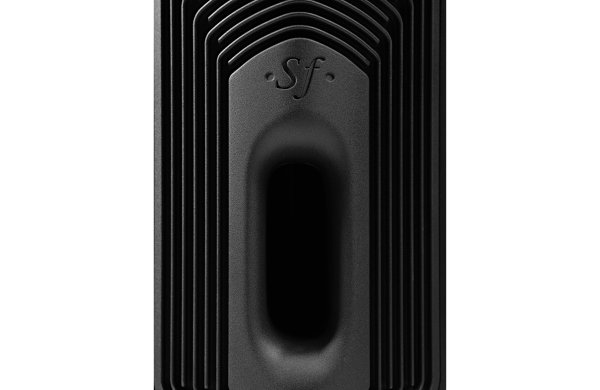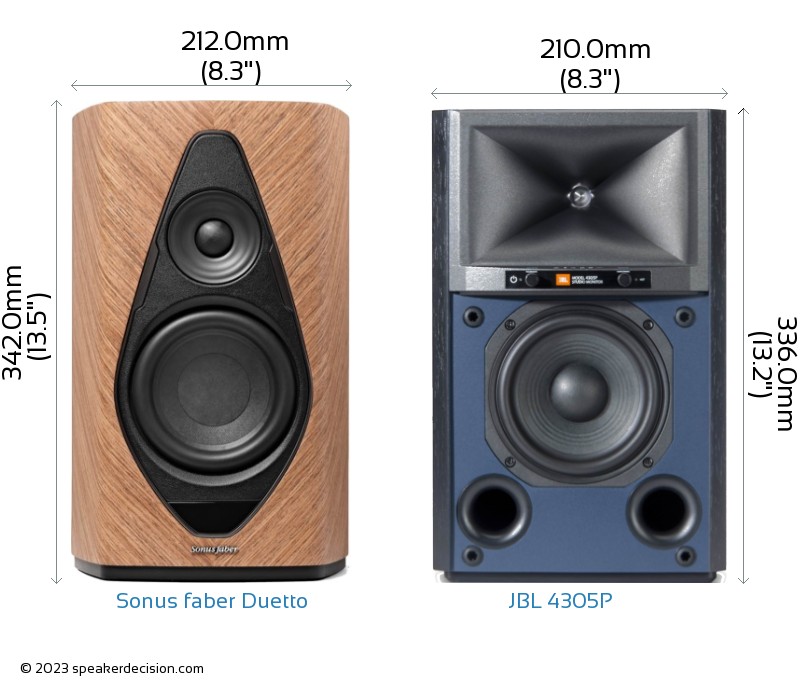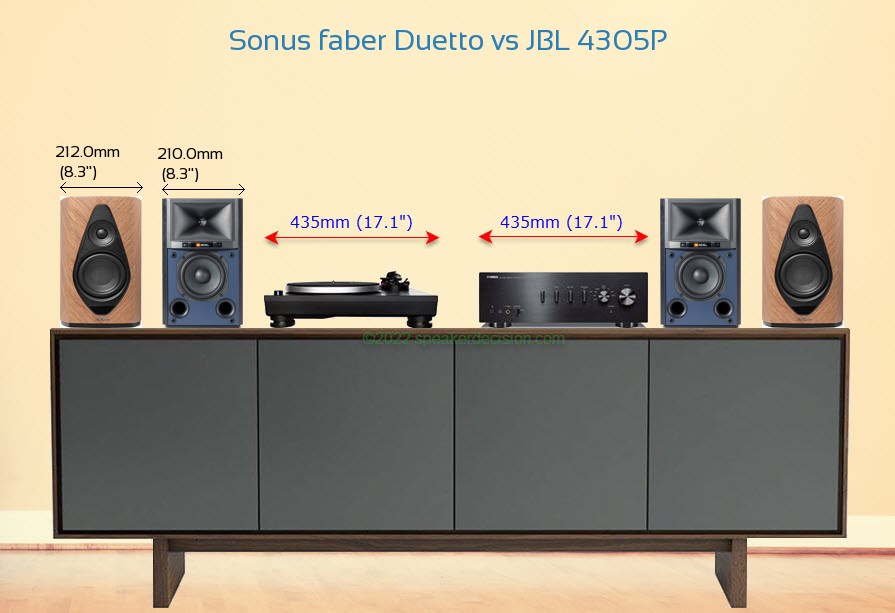In this review, we will be comparing Sonus faber Duetto and 4305P, two Powered Bookshelf speakers from Sonus Faber and JBL. Being Powered speakers, they both have built-in amplifiers so you don't need an external power amp or an integrated amp to power them.
Let's have a brief look at the main features
of Sonus faber Duetto and JBL 4305P first before getting into our more
detailed comparison.
Sonus faber Duetto Key Specs
- 2-way Design
- 700-watt RMS Integrated Amplifier
- 1.1" Soft-Dome Tweeter
- 5.25" Paper-Pulp Woofer
- 37-30k Hz Frequency Response
- 24-bit Max Depth / 192 kHz Max Sample Rate
- Built-in 5.0 Bluetooth
- App Control Feature
- Dimensions (H x W x D): 342.0" x 8.3125" x 11.0625"( 342.0 x 212.0 x 281.0mm )
JBL 4305P Key Specs
- 2-way Design
- 300-watt RMS Integrated Amplifier
- 1" Horn-Loaded Tweeter
- 5.25" Pulp Woofer
- 45-25k Hz Frequency Response
- 24-bit Max Depth / 192kHz Max Sample Rate
- Built-in 5.1 Bluetooth
- App Control Feature
- Weight:6.60kg
- Dimensions (H x W x D): 336.0" x 8.3125" x 11.3125"( 336mm x 210mm x 223.3mm )
In the following sections, we will get into more detail in order to better understand how the Sonus faber Duetto and JBL 4305P compare and hopefully end up with enough arguments to decide which one of these loudspeakers is the better choice for you.
**This post contains affiliate links, and I will be compensated if you make a purchase after clicking
through my links. As an Amazon Associate I earn from qualifying purchases.
Drivers
Both Sonus faber Duetto and 4305P are 2-way speakers.
| Driver |
Sonus faber Duetto |
JBL 4305P |
|
Driver Setup
|
2-way
|
2-way
|
|
Tweeter
|
1.1-inch
|
1-inch
|
|
Midrange
|
- |
- |
|
Woofer
|
1 x 5.25-inch
|
1 x 5.25-inch
|
Sonus faber Duetto features a 1.1" Silk Soft-Dome Tweeter and 1 x 5.25" Paper-Pulp Woofer . On the other hand, the 4305P features a 1" Teonex Horn-Loaded Tweeter and 1 x 5.25" Pulp Woofer with a Crossover frequency at 1750 Hz.
Frequency Response
Sonus faber Duetto has a frequency range of 37-30k Hz whereas 4305P has a frequency range of 45-25k Hz. With a minimum frequency of 37Hz, the Sonus faber Duetto can go significantly deeper on the low side and provide stronger bass compared to the 4305P's min frequency of 45Hz.
Below graphs depict how these two speakers compare with the max, min and average values of the Min and Max Frequencies of other speakers in the Bookshelf class in our database.
Low Frequency
Bookshelf Speakers
High Frequency
Bookshelf Speakers
None of these speakers achieves full range experience which is commonly agreed as 20Hz-20kHz. In order to achieve lower lows / deeper bass, we recommend you pair these with a subwoofer. Visit our Powered Subwoofers section to find out more about the available options.
Cabinet Type and Port Position
Sonus faber Duetto has a rear firing port whereas 4305P has a front firing ports. JBL 4305P's front-firing port gives more flexibility in placement in regards to proximity to walls compared to Sonus faber Duetto with its rear-firing port.
 Sonus faber Duetto Port
Sonus faber Duetto Port
Physical Specs
Size of a speaker can sometimes become an important decision factor due to space constraints or in some cases purely for esthetic reasons. In this section, we are going to compare Sonus faber Duetto's and JBL 4305P's external dimensions. Sonus faber Duetto has external dimensions of 342.0 x 212.0 x 281.0mm ( 13.4375inch x 8.3125inch x 11.0625inch ) whereas JBL 4305P has external dimensions of 336mm x 210mm x 223.3mm ( 13.3125inch x 8.3125inch x 11.3125inch ) .
Sonus faber Duetto is clearly the larger of the two speakers. Its body is 2mm wider, 6mm taller and 58mm deeper than JBL 4305P.
Below you can see the front view size comparison of Sonus faber Duetto and JBL 4305P in scale.
 Comparison image of Sonus faber Duetto and JBL 4305P Size and External Dimensions
Comparison image of Sonus faber Duetto and JBL 4305P Size and External Dimensions
Base Surface Area Comparison
Base surface area of a loudspeaker may become a determining factor when the space in your room or desk is limited.
The base surface area of the Sonus faber Duetto is approximately 595.7cm2 / 92.3inch2 and base area of the JBL 4305P is approximately 468.0cm2 / 72.5inch2. The Sonus faber Duetto requires 27% more surface area than the 4305P which gives it a small disadvantage on placement in tight spaces.
Here is an another comparison that shows both speakers on a BDI Octave Media Cabinet, next to a standard size amplifier and turntable in scale:
 Size Comparison image of Sonus faber Duetto and JBL 4305P on a Media Console
Size Comparison image of Sonus faber Duetto and JBL 4305P on a Media Console
What's in the Box of Sonus faber Duetto?
Here are the items that are included inside the box of Sonus faber Duetto:
2 Wireless powered speakers2 GrillesTwo 6.5-feet AC power cordsRemote controlQuick Start GuideSafety Instructions
What's in the Box of JBL 4305P?
Here are the items that come with the 4305P:
2 Powered speakers2 GrillesTwo 69-inch AC power cords10-feet CAT5e cableRemote control2 AAA batteries8 Self-adhesive feetOwner-feets ManualImportant Safety Instructions